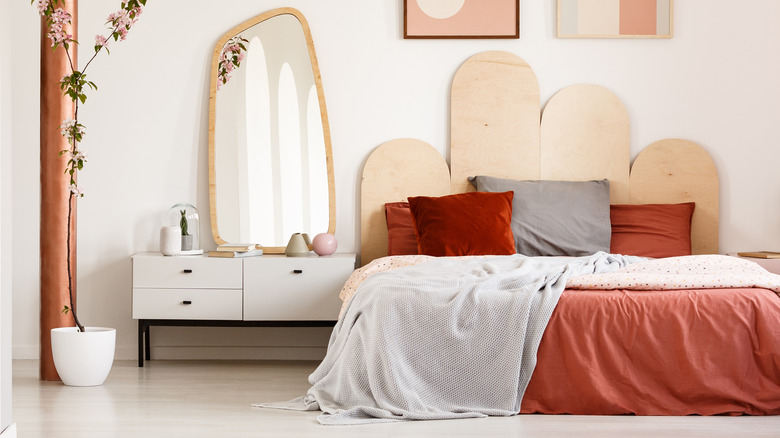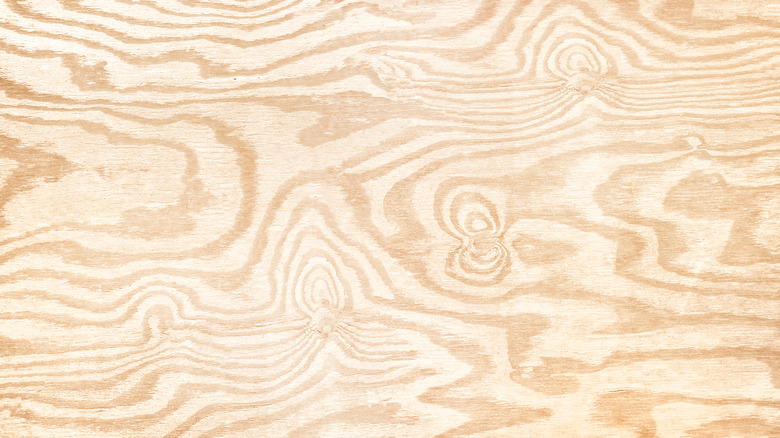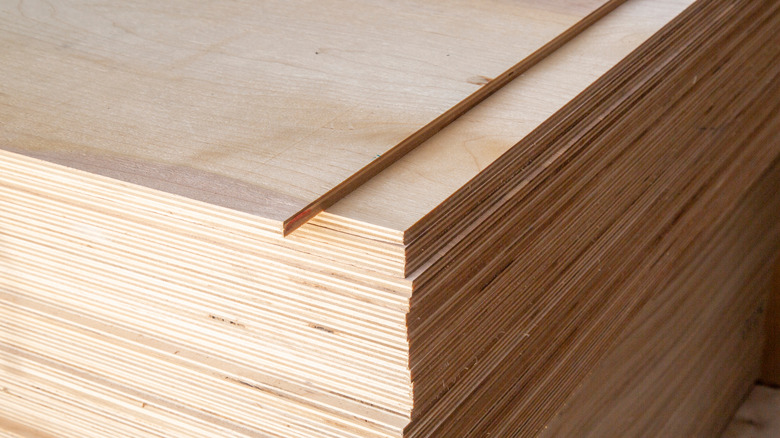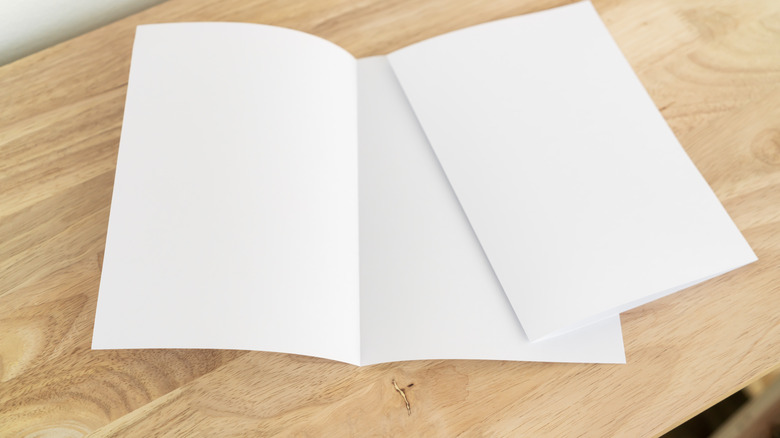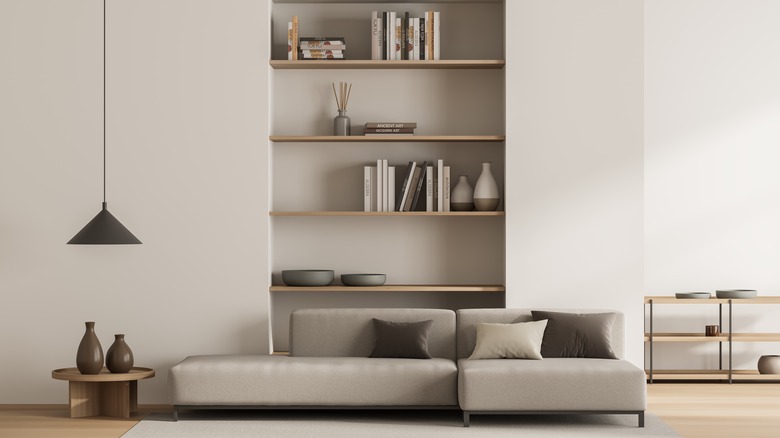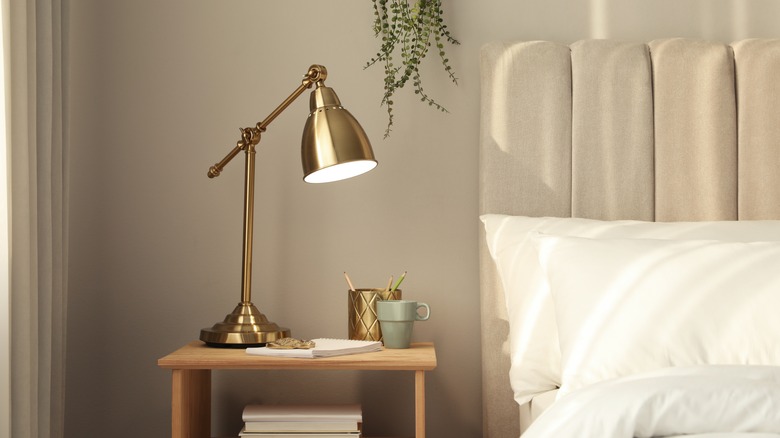5 Creative Ways To Decorate With Plywood Furniture
Plywood furniture has been seeing a resurgence in popularity in recent years (via Interior Notes), a turn from how plywood has been regarded in the past. As Formica notes, the relative softness of plywood (and how it can be easily marked) had, in the past, led to an aversion from homeowners seeking durable furniture of lasting beauty.
However, a change in the quality of furniture-forward plywood and a new wave of self-reliance and DIY spirit has transformed what a homeowner is capable of creating with the help of sturdy and cost-effective plywood sheets. Plywood is a versatile and highly useful material that makes its way into many different aspects of our lives (and often operates as an unsung hero in kitchen cabinets, floorboards, sheds, and more).
Whether you're thinking of building your own furniture with a focus on plywood as your primary construction material, or you're eyeing one or more plywood-focused pieces in a local retailer, these creative options can help you elevate your home. Here are five creative ways you might use plywood in your space.
1. Make the most of a distinctive grain pattern
The most striking thing about a plywood sheet is the grain pattern that runs freely throughout the material. A standard sheet of plywood measures 4 feet by 8 feet, according to Mr. Handyman, and can be found in thicknesses ranging from a mere 1/8 of an inch to far beyond the 1-inch marker.
Every sheet will be unique, so sourcing plywood for any job you might have around the house is a great opportunity to hunt for plywood that can make for a striking veneer. Ripping down a sheet to the dimensions of your headboard, for instance, can give you a unique new addition to any bedroom. Similarly, plywood can make for a wonderful addition to a workplace wall. Fastening the sheet to multiple studs along an empty wall will give you a sturdy board to hang pictures, whiteboard materials, and even shelves or purpose-built storage solutions that make your work easier and your workspace more efficient.
Attaching a sheet of plywood (of really any size that works for your space and requirements) to the wall will give you a versatile framework to add more complementary additions and personalizations to any part of the home. The more distinctive the grain and knot pattern, the better!
2. Add strength and style through laminating techniques
Lamination is the technique that creates plywood sheets in the first place. The lamination process involves binding multiple, thinner sheets of material together to produce a more structurally sound finished timber (via Cabinet City). If you look closely at the end grain of a plywood sheet, you'll see that the board isn't a single, consistent piece of wood that was sawn from a tree (it would of course have to be one gigantic tree to accommodate that kind of product). Instead, plywood is made of many, tiny layers of timber that are glued and pressed together in one long strand to create the board you'll use in your creative household improvement projects.
However, just because a sheet of plywood has already gone through the process of lamination doesn't mean you can't repeat the tactic to reengineer the dimensions of the wood. Cutting down plywood sheets into usable blocks (that correspond with your dimensional needs) is best done with a table saw. The process doesn't have to be complicated, according to I Build it Scrap Bin, but it does require precision measurements and careful planning.
After you've created enough smaller pieces, gluing them together on the flat face (the top or bottom face of a full sheet) and using clamps to form a tight bond will give you a newly designed plywood construction that brings about wonderful striations in the face pattern and can be molded to whatever your needs might be.
3. Use folding tops for greater spatial utility
Plywood is incredibly versatile as a backdrop for other specialty woods. In cabinetmaking and other furniture fabrication, plywood sheets are often utilized as the bone structure that holds the piece together (via Garnica). Hardwoods or other softwood options will typically make up the face or other outward facing segments of these installations in the home, but the strength, relative weight, and cost of plywood makes it a preeminent option in the barebones construction of just about any new piece of furniture.
But plywood is also useful as a table-topping element, particularly when it comes to children's furniture or mobile shelving needs. Plywood sheets can be immensely beneficial as a folding table addition in your home office, a child's room, or as a means to create multipurpose living areas in the common rooms of your home. Plywood sheets, for example, can be used as a decorative wall element that folds down to reveal a gaming table for family evenings together, or as a kitchen table in a smaller living space that requires individual spaces to serve in multiple roles.
4. Think of ways to use the humble box
Plywood is a beneficial material for building shelving, as well as tabletops. Shelves require both a flat surface to hold up items and a superstructure beneath to provide strength to each successive rung.
Cabinet construction, for instance, can be a good model for this type of plywood workmanship. Woodworkers Journal notes that a cabinet is essentially a squared-off box that frames the interior dimensions and facilitates the addition of faces and shelves. A minimalistic cabinet design can act as the foundation for your approach to building a bookshelf or any other shelving unit with plywood as a basic fabrication medium.
Alternatively, sanded and expertly finished plywood sheets can make up the shelves themselves and be creatively paired with metal or any other type of material to create the height between vertical layers. Steve Ramsey notes that all woodworking begins with the construction of basic (and progressively more intricate) boxes. Truly, all that a shelving unit, drawer, or cabinet is revolves around different stylizations of the humble box.
5. Create your own DIY custom piece
Nightstands and other bedroom furniture pieces are often smaller affairs than many other items throughout the home. As a result, homeowners looking for a new addition in these areas often look for personalization, custom features that fit their habits and needs, and high-quality materials that provide durability and style.
Builder Depot notes that plywood is graded with a variety of different naming conventions, and that not all plywood sheets are created equal. Birch or hardwood plywood boards are perhaps the best choice for homeowners looking to purchase or build plywood furniture that'll serve such an important and lasting role in their daily routine. Per Forest Plywood, the best boards are graded as either AA or A1. The first letter is used to denote the quality of the front face, and the second character (typically a number) signals the back face's aesthetic quality. These range from A to D and 1 to 4, respectively.
Because plywood is typically a much cheaper material for the volume of wood that you will be purchasing, splashing out on better quality plywood boards can give you the boost you're looking for when building a new piece of custom furniture, such as a nightstand, for your home.
